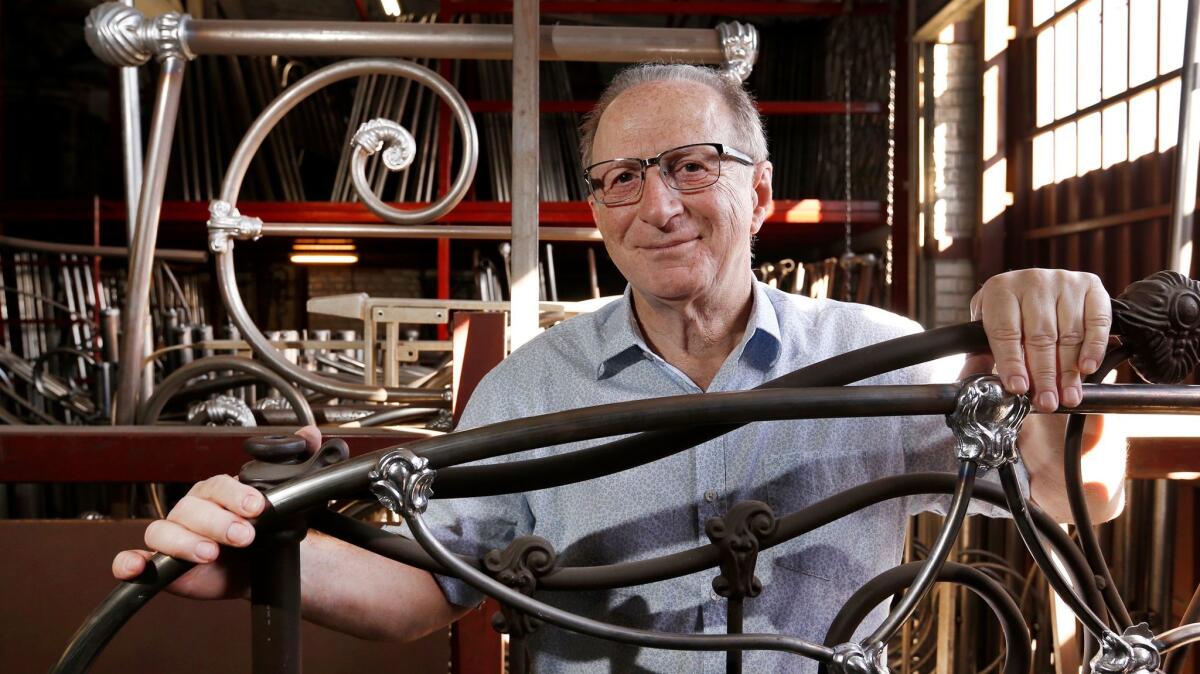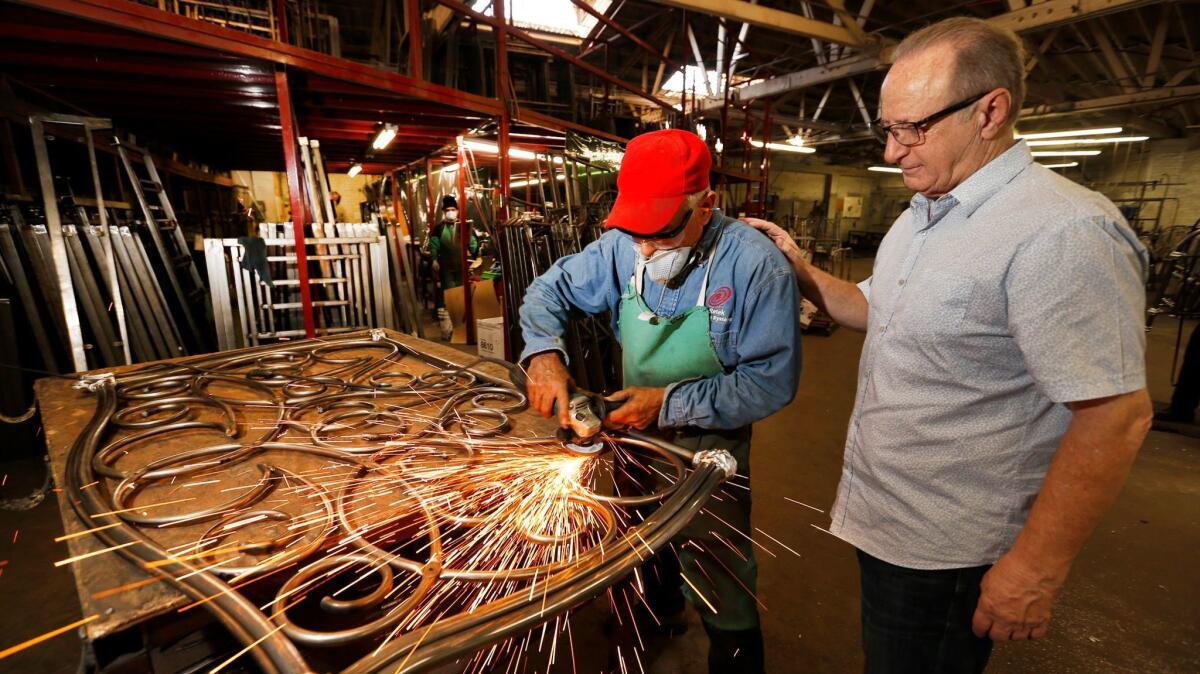This L.A. furniture maker has stayed in business 40 years by catering to customers

- Share via
In 1976, Victor Sawan took over an 8,500-square-foot space near South Los Angeles and started making brass beds.
He named his new company Wesley Allen, created by blending the names of his son, Wesley, and his business partner Martin Bender’s son, Alan. Pretty quickly, the brand became known for the brass furniture that was in keeping with the look of the moment, alongside Laura Ashley-esque floral patterned fabrics, shag carpet and macrame plant hangings.
Wesley Allen has just celebrated its 40th anniversary, but the brass beds are a thing of the past.
Sawan now works with iron and still is aligned with current decor trends: There are sleek canopy beds in weathered gray, Art Nouveau-inspired bar stools in a brushed copper finish, slender upholstered benches. Everything is made within the 190,000-square-foot compound the company now occupies in what is still commonly referred to as the Goodyear Tract — a 200-acre spread that is one of the city’s oldest industrial centers.
“Back then, it was like a soccer field,” said Sawan. “It was so empty that we used to play soccer outside.”
Sawan and his staff — many of whom have been with him for decades — don’t have much time for team sports now: In the run-up to its fourth decade in business, Wesley Allen has launched new categories, including fabrics and upholstery, and has shifted its focus from beds into other parts of the house.
If you don’t listen to the consumer, you’re not going to be on top of things.
— Victor Sawan

“From the beginning, we were always keen on paying attention to trends. If you don’t listen to the consumer, you’re not going to be on top of things.” So if one person called asking if Wesley Allen made a dinette set in a matte black finish, Sawan might ignore it. But by the time a fifth person called, a dinette set in matte black was going to be in production.
The decision to move from brass to iron happened in the early ’90s, when the price of brass went up significantly and Sawan noticed demand dropping. Instead, design lovers were scrambling for reproductions of New England-style antiques and for what Sawan describes as “their grandma’s attic type of furniture.”
“We rode the brass fashion statement for almost 20 years,” Sawan said. “But then everything started changing. Furniture companies were making collections instead of focusing on just one category. We started working with iron — but when you think of an iron bed with a pair of iron tables, it looks cold. We needed something to warm it up.”
He began adding upholstered panels to the headboards and footboards and incorporating some 45 different finishes on the metal to make the iron more decorative.
Sawan embraced the shift from monochromatic and matching pieces into contemporary and modern ones that have something of a Restoration Hardware vibe. He says that the original brass beds are the foundation of everything that has come since.
“The beds from 40 years ago, the classics, never went away. We changed the proportions, the finishes, the applications. We’ve had to adapt to the times.” As a result, when casual dining became a thing, Wesley Allen began making bar stools for kitchen counters, and small dinette tables and chairs. He is now looking at adding coffee and end tables to the mix.
“We have gone from being a brass bed maker to a lifestyle collection brand,” he said.
Shop the look: Wesley Allen’s collection of beds, benches, dining sets and more are sold at various national retailers such as Bed Bath & Beyond and sleep shops, as well as through designer showrooms. While customization is available, prices start at $1,000 for beds, and $1,300 for dinette sets.
Info: Wesley Allen
Editor’s note: One in a series of stories spotlighting artisans in and around Los Angeles.


